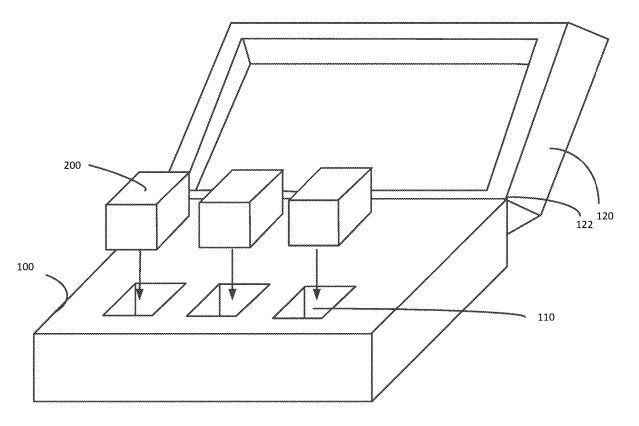Apple Developing Hybrid Docking, Charging Station Capable Of Detecting Wet Contacts
KEY POINTS
- Apple is working on a docking station capable of determining if a connected device has wet contacts
- This is because it knows that moisture can exacerbate the contacts' corrosion process
- The technology is still being developed
Moisture can be both a good and a bad thing. It can be very helpful in various situations, such as when the air is very hot and dry, causing human skin to become dry, so enough moisture helps a lot.
Moisture can also be quite dangerous especially when present in certain situations. For example, moisture can cause damage to some materials, which might worsen the corrosion occurring in various surfaces, such as metals.
A new patent application published by the U.S. Patent and Trademark Office (spotted by Patently Apple) shows that Apple took note of the latter scenario and is currently working on a technology that will prevent certain electronic components – such as the iPhone's charging port – from being corroded by moisture.
In the patent application, aptly titled “Connection and Moisture Detection,” inventors from Apple talk about the dangers that moisture brings to an electronic device's connectors. They mention that these connectors, which are normally used to charge devices and transfer data from one device to another, can be corroded when they come in contact with moisture.
Moreover, the inventors noted that the corrosion caused by moisture “can be greatly exacerbated by the presence of an electric potential, such as when a voltage is applied to a contact.” For this, the inventors propose “methods, structures, and apparatus” capable of detecting if a device's contacts are connected to something, and if the contacts have moisture on them while connected.
How it works
The patent application provides certain embodiments describing how the proposed system works.
One of the embodiments show the technology as being used in a docking station. This docking station has several recesses or receptacles where electronic devices or accessories such as “rechargeable batteries, speakers, Bluetooth headphones, headsets or earbuds, wearable computing or media devices such as jewelry or watches, or other types of accessories” can be placed.

The docking station can be used to charge the devices or transfer data to them. It will also allow the devices to communicate with each other, via the dock, for certain uses.
What's interesting about the docking station is that it will feature the above mentioned technology to determine whether moisture is present at the mating connection, i.e. the contacts or terminals where the docking station connects with the accessories.
If the docking station detects the presence of moisture in the contacts, it will respond accordingly by lowering the voltage it sends to the accessories. This will help mitigate the corrosion damaging the contacts, if any. The docking station will charge the accessories at a faster rate once it determines that moisture is absent from the contacts.
© Copyright IBTimes 2024. All rights reserved.





















